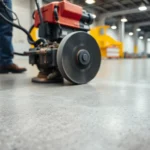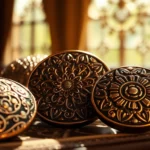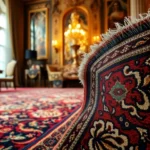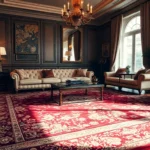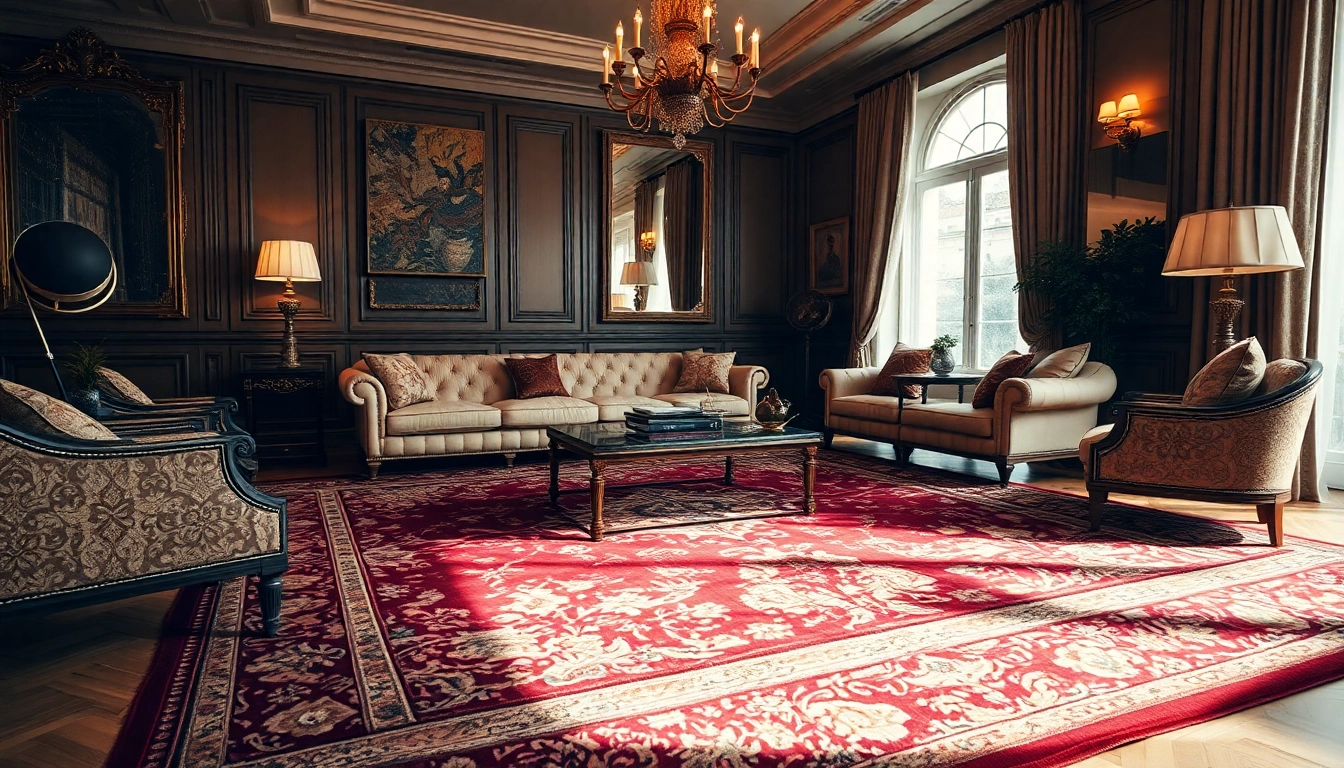Understanding the Charm of Tappeto Persiano Milano
The allure of Tappeto persiano Milano lies in its deep-rooted history, unparalleled craftsmanship, and timeless aesthetic appeal. These exquisite Persian rugs have been treasured for centuries, embodying artistry, cultural heritage, and sophistication. In Milan, a city renowned for its fashion, design, and luxury, the presence of authentic Persian carpets elevates interior spaces, blending tradition with modern elegance. Whether as a statement piece or a subtle accent, a genuine Persian rug can transform any room into a gallery of craftsmanship and history.
Historical Significance of Persian Rugs in Milan
Milan’s fascination with Persian rugs dates back to the 19th century, when trade routes and diplomatic relations facilitated cultural exchanges between Iran and Italy. These rugs became symbols of luxury and status among Milanese aristocracy and bourgeoisie. Today, they continue to symbolize a connection to rich traditions and timeless artistry, harmoniously fitting into contemporary design sensibilities. The city’s upscale showrooms and antique markets often feature curated collections, reflecting a sustained appreciation for the authentic beauty of Persian craftsmanship.
Key Features of Authentic Persian Tappeti
Authentic Persian rugs are distinguished by their intricate hand-knotted construction, natural dyes, and unique designs rooted in regional traditions. They typically feature complex floral motifs, medallions, and geometric patterns, often reflecting the cultural symbolism of their region of origin. Materials such as silk, wool, and cotton are carefully selected for durability and luster. The knot density—expressed as knots per square inch—serves as a quality indicator, with higher densities denoting finer craftsmanship. Recognizing masterful craftsmanship ensures that buyers invest in genuine, long-lasting works of art.
Why Choose a Tappeto Persiano Milano for Your Space
Selecting a Persian rug in Milan offers a blend of cultural richness and aesthetic versatility. These rugs can anchor a room’s design, add warmth and texture, and serve as conversation pieces that evoke history and artistry. Their durability and timeless style make them suitable for both residential and commercial environments, from luxury apartments to boutique hotels. Moreover, investing in an authentic Persian piece enhances the overall value of your interior, providing a legacy of craftsmanship that can be passed down through generations.
How to Select the Perfect Tappeto Persiano in Milano
Materials and Craftsmanship Expectations
When choosing a Persian rug, understanding the materials is key. Wool is the most common, prized for its durability, softness, and ease of maintenance. Silk rugs are considered the epitome of luxury, offering a luminous sheen and exquisite detail but requiring delicate handling. Hand-knotted construction is the hallmark of authenticity, demanding hundreds of hours of skilled labor. Genuine rugs will exhibit irregularities in the knotting, characteristic of human craftsmanship. Always verify the knot density—higher counts indicate finer detail—and inquire about the origin and artisans associated with the piece.
Size, Design, and Color Considerations
Determining the right size hinges on your space and functional needs. Larger rugs suit expansive living rooms or bedrooms, anchoring furniture arrangements, while smaller pieces can serve as focal points or decorative accents. Design-wise, select patterns that complement your interior style—traditional medallions for classic spaces, geometric motifs for modern aesthetics, or floral designs for romantic ambiance. Color schemes should harmonize with existing decor; neutral tones provide versatility, whereas bold hues add vibrancy. Always consider the background and foreground elements to create visual balance.
Budgeting: Price Ranges and Value
Prices for authentic Persian Rugs in Milan vary widely, influenced by size, materials, age, and rarity. Entry-level modern reproductions can start at around €200–€500, while vintage or antique pieces may reach several thousand euros. A high-quality, handmade silk Qum or Ghom rug can cost upwards of €5,000 or more, reflecting their exclusivity and craftsmanship. To maximize value, prioritize authenticity, knot density, and provenance over superficial features. Working with reputable galleries or certified dealers ensures transparency and investment security.
Maintaining and Restoring Your Tappeto Persiano
Proper Cleaning and Care Tips
Regular maintenance preserves the beauty and integrity of your Persian rug. Vacuum gently with a brushless suction to remove dust and debris, avoiding aggressive brushing that can damage fibers. Rotate the rug periodically to ensure even wear and sunlight exposure. Spot cleaning with mild, pH-neutral solutions prevents stains from setting. Avoid excessive moisture, and consider placing a protective pad underneath to prevent slipping and wear.
Restoration Services Available in Milan
When significant damage occurs or a restoration is needed, specialized services in Milan can restore your Persian rug to its original splendor. Skilled artisans use traditional techniques such as re-weaving, knot repair, and dye restoration. Reputable centers like Toranj offer expertise in authentic restoration, ensuring that the cultural and aesthetic value of the rug is preserved.
Prolonging the Quality and Longevity
Longevity is enhanced through proper care and timely restoration. Keep your rug away from direct sunlight to prevent fading, and control humidity to avoid mold growth. Store rugs wrapped in breathable materials when not in use. Regular professional cleaning every 1–3 years keeps fibers healthy and colors vibrant, ensuring your Persian carpet remains a cherished heirloom for decades.
Shopping for Tappeto Persiano Milano: Where and How
Reputable Galleries and Showrooms in Milan
Milan boasts a selection of venerable galleries and showrooms dedicated to authentic Persian rugs. Stores like Toranj and Artorient Milano showcase curated collections of high-quality, handcrafted pieces. Visiting these establishments allows you to experience the textures and craftsmanship firsthand, receive expert advice, and verify authenticity before making a purchase.
Online Buying Tips for Authentic Tappeti
When purchasing online, verify the credentials of the seller, request detailed photographs, and proof of provenance. Look for sellers with positive reviews, transparent return policies, and certification of authenticity. Comparing multiple sources helps discern market pricing and quality standards. Being cautious prevents counterfeit or low-quality reproductions from entering your collection.
How to Evaluate and Verify Authenticity
Authentic Persian rugs are characterized by their hand-knotted construction, regional patterns, natural dyes, and slight irregularities—proof of human craftsmanship. Ask for detailed information about the origin, age, and knot density. Certification from recognized institutions or experts adds credibility. Examining the reverse side of the rug reveals the knotting technique and helps differentiate genuine pieces from machine-made imitations.
Trends and Investment Value of Persian Rugs in Milan
Current Design Trends Incorporating Tappeti Persiani
Modern interior design seamlessly integrates Persian rugs, blending traditional motifs with contemporary styles. Trendy color palettes feature muted tones and minimalist patterns, while bold, vibrant designs are making a strong comeback in fashion-forward spaces. The versatility of Persian rugs—ranging from classic medallion designs to abstract reinterpretations—makes them adaptable to diverse aesthetics, from maximalist luxury to Scandinavian simplicity.
Why Persian Rugs Are a Wise Investment
Authentic Persian rugs are not just decor but also valuable assets. Their rarity, craftsmanship, and cultural significance drive appreciation over time. Certain types, such as antique Ghom or Qum, are highly sought after by collectors worldwide. Provenance, age, and condition influence market value, making it a rewarding investment for those who buy wisely from trusted sources. When well maintained, Persian rugs can increase in value, serving both as aesthetic delights and financial assets.
Future Market Outlook and Collectibility
The global market for Persian rugs remains robust, fueled by increasing demand in luxury markets and interior design sectors. Millennials and collectors are showing heightened interest in authentic, handcrafted pieces, emphasizing sustainability and cultural heritage. As Milan continues to foster art and design innovation, Persian rugs’ timeless appeal guarantees their relevance and collectibility for the foreseeable future.
